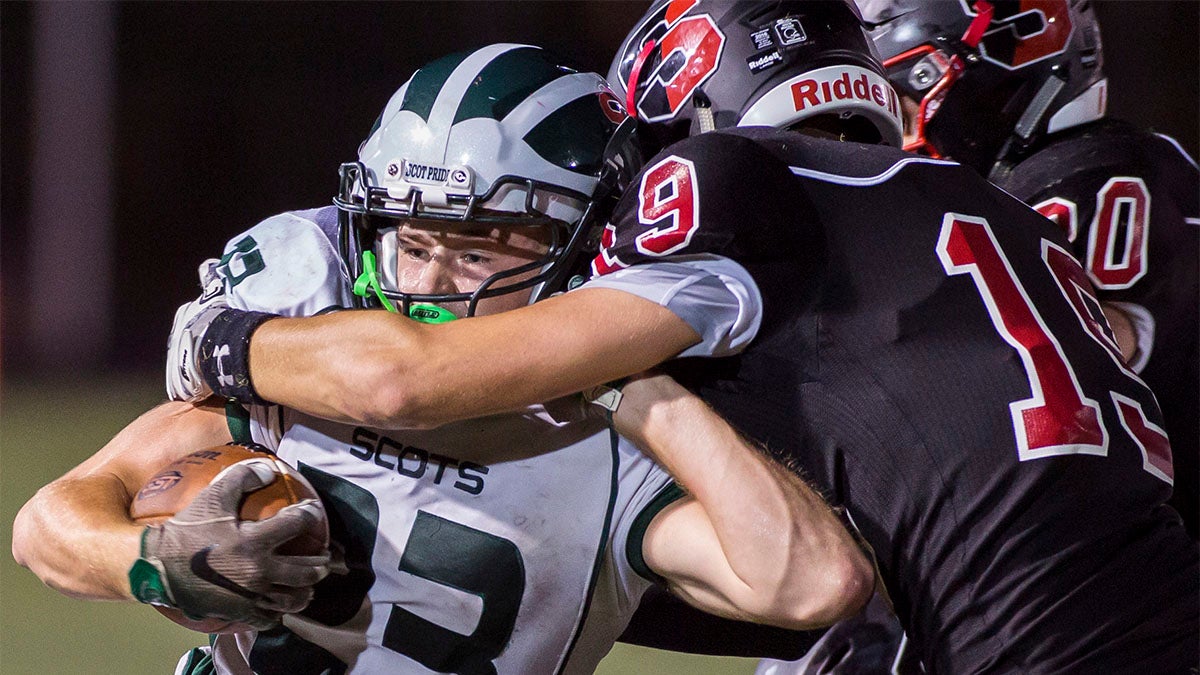Despite higher enrollment, high school sports participation down

Last year, the number of students playing high school sports in the United States dropped by about 40,000 nationwide. That might not sound like a dramatic dip, but consider this: it is the first decline in American high school sports participation in 30 years ago. There hasn’t been a dip since the 1988-89 school year.

And it is the first time sports participation has ever dropped in a year when school enrollment went up.
Those numbers, collected in an annual report by the National Federation of State High School Associations, may reflect growing concern about the safety of tackle football.
Participation in 11-man football fell for the fifth consecutive year nationally, to numbers not seen in almost two decades. There were 1,006,013 boys who played 11-man football (and about 2,000 girls) last year, the lowest total since 1999-2000 when 1,002,734 boys suited up for an 11-man team. Meanwhile, participation among boys increased last year in sports such as track and field, soccer, wrestling and tennis.
There’s no question football’s image has taken a big hit as research results on concussions, chronic traumatic encephalopathy, or CTE, and its link to football becomes available. High-profile former NFL quarterbacks such as Troy Aikman, Brett Favre and Kurt Warner each have said they wouldn’t feel comfortable with their children playing youth football. Former President Barack Obama and LeBron James are both on the record about the sport’s dangers, too.
The football crisis appears to be happening from the ground up. In 2008, 3.7 percent of U.S. children ages 6 to 12 played tackle football on a regular basis, while only 2.9 percent did so in 2017, the Aspen Institute reported in 2018. And Pop Warner, the largest youth football organization in the U.S., saw participation drop by more than 23,000 players from 2010-2012, from 248,899 to 225,287, according to an ESPN Outside the Lines report.
Victoria Jackson, a sports historian and lecturer at Arizona State University, wonders how much longer youth football can exist in its current form.
“Why are we playing the sport if we know you're improving the likelihood of maintaining your health by not playing it?” Jackson said. “We should be questioning whether or not we really think it's appropriate for our children to play this game when there's so many other options.”
But writer Derek Thompson recently argued in The Atlantic that to attribute the decline in high school sports participation solely to anxieties over football is a mistake. America’s widening wealth gap also is to blame, he argued.
“The deeper story is that the weed of American-style meritocracy is strangling the roots of youth sports,” Thompson wrote. “As parents have recognized that athletic success can burnish college applications, sports have come to resemble just another pre-professional program, with rising costs, hyper-specialization, and massive opportunity-hoarding among the privileged.”
Scott Brooks, director of research at the Global Sport Institute at Arizona State University, has coached youth sports for about 20 years and has witnessed the landscape change that Thompson wrote about.
“You have definitely a class issue, an access issue,” Brooks said.
Brooks said a sport like basketball, which is increasingly embracing the pay-to-play AAU model, tends to bring opportunists out of the woodwork with lofty promises of a pipeline to college and the NBA.
“I call them hoop entrepreneurs,” Brooks said. “Their nutritionist, their dietician, strength and conditioning coaches – that whole industry that has been built around this myth that all these kids can go in and play college sports and get a scholarship.
“That’s one of their pitches. ‘Hey, spend $20,000 on me, and that’ll save you $80,000 on four years of college.’ ”
Beyond financial factors, Brooks believes young athletes are self-sorting themselves out of sports earlier than ever. Social media accounts like House of Highlights, which has more than 14 million Instagram followers, and countless YouTube clips are available to teenagers of all talent levels. For those not bound for professional sports, being inundated with highlight reels from their peers can often have a negative effect on a young athlete’s psyche, Brooks argued.
“They look at that and say, ‘I don't have a chance,’ ” Brooks said.
There seems to be no shortage of reasons for the first downturn in high school sports participation in 30 years. The question now: will it continue?
Tyler Dunn is a masters sports journalism student at Arizona State University
Related Articles
Baseball participation up since 2014, especially for casual players
Body image, sexism among barriers to women's sports participation
Implicit, explicit barriers hampering global sport participation
Have parents ruined sports participation for kids?
Study shows positive correlation between playing sports, better self-image among girls

